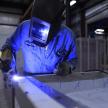
08th
Office Portfolios: GRESB and Indoor Environment
By Michael Taranto, Director, QED Environmental Services
In this article we didn’t set out to write a hack or a cheat to a higher GRESB score, it started with a simple question. How important is indoor environment quality (IEQ) to a GRESB score? How many GRESB points might be available for best practice performance in IEQ?
We wholeheartedly embrace the GRESB philosophy that measuring environmental, social and governance (ESG) performance is just the start of a conversation between asset managers and investors. Like many things in life, if you start to measure it then improvement becomes inevitable, and the metrics become a basis for engagement with stakeholders and the wider community.
In our experience, this also happens at the asset level. By measuring parameters associated with IEQ for the purpose of a rating, facility managers become interested in the process of improving the rating score and engage positively in management techniques and capital investment required to improve the relevant parameters.
Before we jump in to the analysis it is important to note that we have addressed these questions from an Office perspective, ignoring other property types for the moment.
How IEQ can influence your GRESB score
IEQ on its own is but one small part of a portfolio’s potential GRESB score – touching 7 of the 50 or so Indicators across four of GRESB’s seven Aspects (ignoring the optional Health and Well-being supplement for the time being)[1].
What we found most interesting, and of particular importance to improving your overall GRESB score, is that gaining some additional points doesn’t really require top IEQ performance, only demonstration that you’re measuring it and working to improve it.
We determined that, IEQ could be worth a whopping 10% of a GRESB score. Here’s how we came to that conclusion:
- there are 136 GRESB points available in total
- we found 13.5 points (10%) that are available through taking measures related to IEQ
- in the Building Certification Aspect, indicators BC1.1 and BC1.2 are worth a combined 12 points
- for example in Australia, you’re already doing NABERS Energy ratings so adding NABERS IE and one other NABERS rating (either Waste or Water) upgrades to a NABERS Multi-Rating Certificate, where you pickup those 12 points
- or in other countries, you might undertake a WELL rating or Fitwell rating, both heavily influenced by IEQ parameters, and find 12 points that way
- there are 1.5 points pertaining to IEQ measures spread over five other Indicators (see the below table). Examples are conducting technical assessments for health and wellbeing including IEQ (R04) or including IEQ in standard lease contracts (SE10.1)
It does seem like a no brainer in Australia to go for the NABERS Multi Rating Certificate, though we note that only a few leading asset managers are presently pursuing multiple NABERS ratings on a portfolio wide basis.
No doubt your present GRESB score might already include points in the Indicators we’ve highlighted, however we strongly recommend reviewing the table below to understand the impact of IEQ in the context of your portfolio.
We believe all of the Indicators touching on IEQ are important and agree with GRESB that the strong weighting for building certifications is justified.
And while this article has focused very much on scoring points, let us leave you with this - ratings and scores are a means to an end, i.e. improving outcomes, they are not, and should not be viewed as, the end itself.
Aspect | Indicator | Points | Description |
Risks & Opportunities | R03.1: Environmental and/or social risk assessments as a standard part of due diligence for new acquisitions | 0.25 | IEQ is one of 18 areas of due diligence check boxes, each worth 1/8 point, multiplied by up to 2x if sufficient evidence is provided. We recommend that standard due diligence process includes a review of the target’s existing IEQ documentation, and if none exists, commissioning a limited scope IEQ risk assessment. possible 1/4 point for IEQ. Without IEQ it’s certainly possible to attain the full 2 points available for R03.1 but the cost involved should be lower than ticking some of the other boxes with full evidence. |
| R03.2: Environmental and/or social risk assessments of standing investments in the last three years | 0.125 | IEQ is one of 19 check boxes worth 1/8 point multiplied by % of portfolio covered by IEQ risk assessments. To attain the full 2 points available for R03.2 requires 16 boxes ticked at 100% portfolio coverage. |
| R04: Technical building assessments during the last four years | 0.5 | IEQ forms part of the requirements for Health and Wellbeing which itself accounts for ½ a point (i.e. 1/9 available for Health & Wellbeing multiplied by 4.5 points in total available). |
Monitoring and Environmental Management Systems | ME2: Data management system | 0.167 | This indicator measures the application of information technology to collect and analyze performance. IEQ is one of eight components, some of which are weighted more highly for example energy consumption. IEQ alone accounts for 1/6 point for 100% of the portfolio covered and refers to monitoring conditions inside the building and occupant control over lighting and thermal comfort. |
Building Certifications | BC1.1: Buildings that obtained a green building certification at the time of design, construction or renovation | See BC1.2 | The certifications that are in use in Australia include GBCA Design and As Built; WELL Buildings; and WELL Core and Shell. Depending on the certifications used and percentage of portfolio certified, the combined BC1.1 and BC1.2 Indicators can be worth up to 12 points. Most of the certification schemes incorporate IEQ in the rating methodology and weight it highly. |
| BC1.2: Buildings that hold an operational green building certificate | 12 | Certifications that are in use in Australia are Fitwel; Greenstar Performance – Building Operations; NABERS Multi-Rating Certificate[1]; and WELL Buildings. We wrestled with allocating 12 points in this table – is that a true reflection of IEQ’s contribution? We decided that in the Australian context the 12 points are available to any portfolio that adds NABERS IE and say NABERS Water to the compulsory NABERS Energy rating already undertaken. |
Stakeholder Engagement | SE10.1 Sustainability-specific requirements in its standard lease contracts | 0.5 | This indicator contains a long list of 23 check boxes including indoor environmental quality management, each worth ½ point. |
About the Author
Michael joined QED in 2015 to lead the management team, seeing an opportunity to position the firm for long term growth by aligning fulfilment of QED’s people with innovation and customer requirements in built environment.
References:
2018 Real Estate Scoring Document, GRESB 2018, https://documents.gresb.com/generated_files/real_estate/2018/real_estate/scoring_document/complete.html
2018 Real Estate Reference Guide, GRESB 2018, http://gresb-public.s3.amazonaws.com/2018/Assessments-and-Reference-Guides/2018-GRESB-RE-Reference-Guide.pdf
This article was originally published on The Fifth Estate
[1] NABERS Multi-Rating Certificate is available to a building that has attained three current NABERS ratings – for example Energy, Indoor Environment and Water.
[2] We also ignore the New Construction module which includes a couple of references to IEQ.
Categories
Recent Posts
Trichloramine and Indoor Air Quality in Swimming Pools
05th Nov
For swimmers and pool workers alike, the characteristic "chlorine smell" at indoor swimming pools is part of the experience. Howev...
Indoor Air Quality Takes Centre Stage: A New Government Report on Airborne Virus Transmission
30th Sep
The importance of Indoor Air Quality (IAQ) has gained significant attention following the release of a groundbreaking report from Australia‚...
Changes to the workplace exposure standard for welding fumes
15th Mar
On January 18, 2024, SafeWork Australia made a significant adjustment to the Workplace Exposure Standard (WES) for Welding Fume (not otherwi...

















